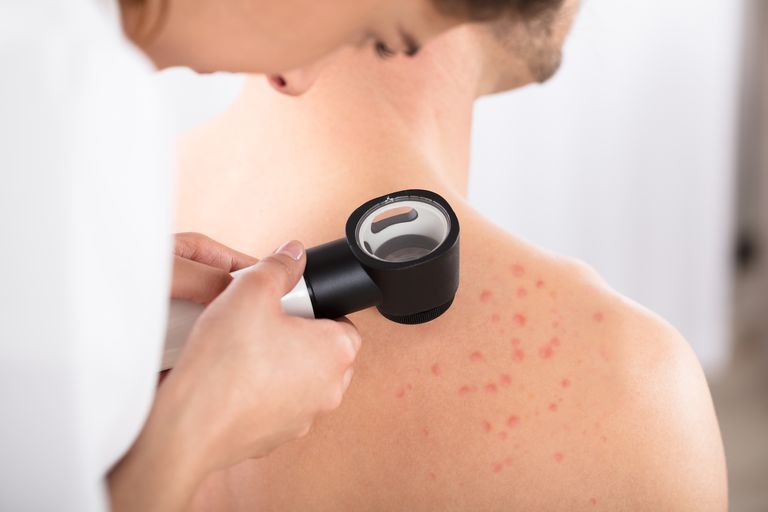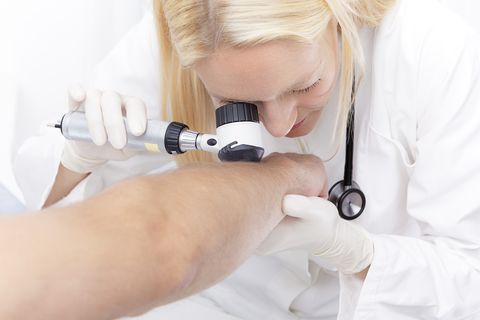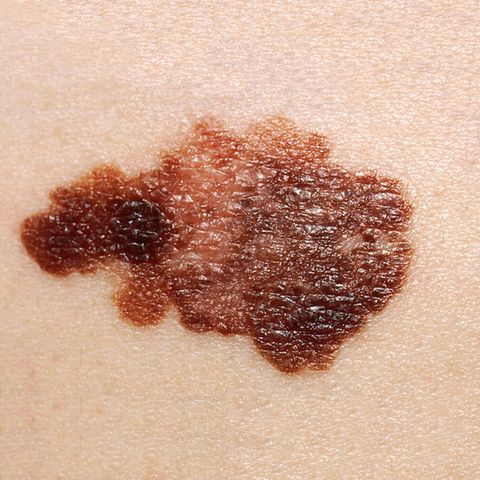
Artificial intelligence may be smarter than doctors — or at least better at detecting skin cancer, according to a new study.
Researchers pitted man against machine to determine which is better at diagnosing skin cancer. They taught a computer to detect cancer by showing it 100,000 images of moles, and then compared its performance to a group of 58 dermatologists. In the end, they found that AI could better diagnose the most dangerous form of skin cancer, melanomas, which killed more than 6,000 men in 2014 — the most recent year for which data is available.

Getty Images
The study
Scientists showed 100,000 photographs depicting a variety of moles to a convolutional neural network (CNN) machine, so it could learn the differences between a cancerous and noncancerous mole. Then, 300 photos not used during the training were selected to test the CNN’s ability to detect cancer.
From that sample of 300, 100 images were then given to dermatologists to test their melanoma-detecting abilities. Doctors looked at the photos and offered their diagnoses and treatment plans.
The results
On average, dermatologists correctly identified 86.6 percent of melanomas and 71.3 percent of malignant lesions. AI, in comparison, accurately diagnosed melanomas 95 percent of the time.
When dermatologists were given a little additional information — such as the patient’s age and sex, the location of the mole, and close-up photos — their performance was slightly better, though still not as good as the machine’s. Dermatologists accurately diagnosed 88.9 percent of melanomas and 75.7 percent of non-cancerous marks when give that extra info.

Getty Images
So, are machines replacing doctors?
Not quite. According to study co-author Dr. Holger Haenssle of the University of Heidelberg in Germany, AI would just be used as a tool by doctors.
“This CNN may serve physicians involved in skin cancer screening as an aid in their decision whether to biopsy a lesion or not,” he said in a statement. “Most dermatologists already use digital dermoscopy systems to image and store lesions for documentation and follow-up. The CNN can then easily and rapidly evaluate the stored image for an ‘expert opinion’ on the probability of melanoma. We are currently planning prospective studies to assess the real-life impact of the CNN for physicians and patients.”

Getty Images
How to spot melanomas at home
Men are more likely than woman to develop skin cancer. Watching for new growths and keeping an eye on current moles is vital to ensure any cancerous lesions are caught early.
Want to perform at-home checks? Moles larger than the size of an eraser, or ones that vary in color, could be signs of melanoma. For more strategies for spotting skin cancer, click here.
Source: Read Full Article
